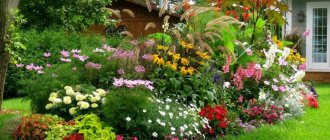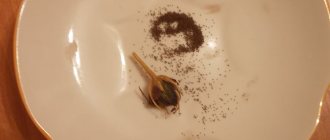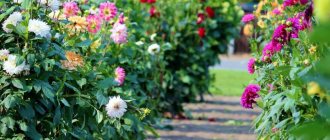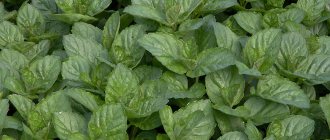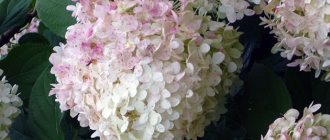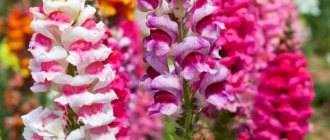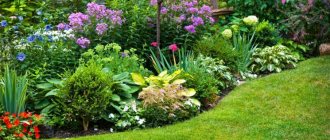Groups Flower Growers Club
January 19, 2022 at 03:19 pm 531
Author: Alisa
Log in to the site and you can join the group.
Not only garden flowers and plants can decorate a summer cottage, but also plants that grow in the forest, on lawns, in fields or on rocks.
So I have such plants in my dacha. They grow well, bloom brightly and abundantly, tolerate frost well and do not require special attention. Primroses are the first to bloom; they begin to bloom in mid-May, although at this time it is still quite cold here.
The forest violet is the first to bloom in early May, then the rest of the primroses begin to bloom - lungwort, primroses, lumbago, marsh marigold and other flowers from nature.
Violet
Botanical name: hill violet blooms in early May. The soil is still quite cold, it often snows at this time, but she is in a hurry to show everyone her light purple flowers.
I brought violets from the forest, I was very impressed by the lilac violet meadow. The plant is low-growing with heart-shaped, rounded leaves collected in a rosette, with fragrant flowers located on low peduncles. Propagates by self-sowing. My violets are scattered all over my summer cottage.
In the spring I remove most of the plants and leave them only in flower beds.
Primrose
My favorite wild plants are primroses. I have two types of forest primula primroses with bright yellow flowers and with bright pink ones.
They bloom from mid-May, when tulips just begin to develop buds. They reproduce by self-sowing, young seedlings sprout only where they grow and do not go beyond the flower garden. You can read more about primroses in this article.
Delphinium
Delphinium is a very delicate and beautiful wildflower. A beautiful love story is connected with its origin. In Ancient Greece, a talented and loving young man decided to revive his dead beloved, sculpted her statue and breathed life into her. The Olympian gods, hearing about such insolence, turned the guy into a dolphin. His beloved waited for him every day on the seashore in the hope of seeing him at least once. And one day he appeared and brought his beloved a beautiful flower.
This bright and beautiful wildflower can be very tall. Delphiniums can grow up to 2 meters in height. There are 400 species of them. Can you imagine how beautiful it is to see a whole multi-colored field of delphiniums - a gorgeous sight.
8
Marsh marigold
The marsh marigold grew near our old dacha, right behind the fence; there, in the spring, melt water always collected and marigolds grew on the hummocks - neat bushes with large, shiny, rounded leaves. At the end of May, these bushes were covered with bright yellow flowers, and the wetland area with hummocks turned into a yellow sunny meadow.
Marsh marigold is a perennial from the Ranunculaceae family, the bushes are not tall, about 30 centimeters. The flowers are not large, with five petals of yellow-golden color, with many stamens inside the flower. From 5 to 10 flowers bloom on one peduncle.
This is a moisture-loving plant. My marigold grows in the dampest and shady flower garden next to the hostas and buzulnik.
In the spring, the snow does not melt there for a long time, and there is also a barrel into which rainwater flows from the roof; if the barrel overflows, the water flows out onto the flower garden. In the spring, there is enough moisture for marigold to bloom. And in the summer, its bushes are covered with hosta leaves, and it does not suffer from the summer heat.
Alyssum rocky
I discovered this flower when I was looking for stones for my garden. Our dacha community is located on a large hill or mountain. In some places the foot of the mountain is rocky. We drove up to this place to collect large stones, which I use for the design of the dacha.
On the slope of this hilly area I found flowering plants - purple lumbago, alyssum with yellow flowers, low-growing yellow irises. There are also unusual-looking plants unknown to me - bushes with long leafless stems or these are leaves, they bloom with small white flowers and shaggy plush bushes - I called this plant moss.
I also found on this slope a fragrant plant with twining stems and small leaves - by the smell I determined that it was creeping thyme.
I dug up all these plants bush by bush and brought them to the dacha. I built a small hill from stones and planted these plants.
I planted the lumbago and irises in another place. Most of all I liked alyssum on my small alpine hill.
Rock alyssum is a perennial, about thirty centimeters high. It has branched stems, woody at the roots. The leaves are small, elongated in shape, grayish in color. The flowers are bright yellow with four small petals and fragrant.
Alyssum blooms for more than a month, sometimes blooming at the end of summer. It propagates by self-sowing, sometimes in cold winters the bushes freeze.
Buttercup
This particular flower is called the “rose of the fields,” but in fact, it seems that only thorns are missing.
Beautiful and dangerous, this is how this wildflower can be described. Behind the sunny brightness of the delicate petals lies a hidden threat. Buttercup sap is very poisonous, so be careful when picking this flower.
9
Irises are low growing
This is a low-growing perennial plant with a thick branched rhizome, with flat, long bluish-green leaves. The flowers are quite large, the petals are bright yellow, there are thin dark stripes at the base, there is a mossy beard on the petal, the inner petals are narrower than the outer ones, elongated.
I really liked these miniature irises, I called them toffees. They grew well, bloomed profusely in the spring, but did not sprout in 2019, like many of my other flowers.
Later, in nature, I again came across iris bushes with yellow and blue flowers, but I didn’t dig them up, let them grow in the wild.
Creeping thyme or thyme
Creeping thyme is a low perennial fragrant subshrub. Shoots, with many branches on which are located small green oblong leaves, spread along the ground, weaving the area.
At the end of the stems, inflorescences with small pinkish-purple fragrant flowers are formed. And all parts of the plant - leaves, stems - exude a pleasant aroma.
Bogorodskaya herb, as creeping thyme is popularly called, is a medicinal plant and is used in folk and traditional medicine to treat various diseases. It is also used as a spicy seasoning for various dishes. And we love thyme tea, made from fresh herbs in the summer and dried for the winter.
Cornflowers
In the great expanses of our country, a delicate, fragile flower with sky-blue petals grows. This is Cornflower. Their main habitat is meadows and fields, and especially many cornflowers can be found in a rye field.
Its delicate and sweet aroma attracts bees from all over the area; cornflower honey is one of the most delicious delicacies. Girls often weave wreaths from cornflowers, and words cannot describe the fragrant tea made from the petals of this flower.
7
Lungwort
Lungwort is another primrose flower from the forest. This is a perennial herbaceous plant from the Borage family. The height of the bush is about 20 cm, with straight, rough stems and lanceolate leaves, pointed at the ends; the leaves also have rough pubescence.
In the spring, immediately after the snow melts, pink buds appear on the stems, then, when the bud opens, the flower petals turn bright blue or purple.
After flowering, the lungwort grows large basal leaves on long petioles.
Lungwort grows at our dacha, it begins to bloom in early May, its flowers are small bright blue bells, very fragrant.
During flowering, bumblebees buzz above the blooming lungwort all day. They collect nectar from young pink flowers and pollinate the inflorescences. Pollinated flowers change color to blue. And they no longer attract bumblebees.
Lungwort is a medicinal plant and is used in folk medicine. To treat bronchitis, acute respiratory viral infections, and pneumonia, decoctions of lungwort leaves are used; gastrointestinal disorders, kidney and bladder diseases are also treated.
Lumbago or sleep-grass
Open lumbago or sleep-grass is a perennial herbaceous plant, 10-15 cm high, belongs to the Ranunculaceae family.
The lumbago begins to bloom with the arrival of the first warm days. As soon as the ground warms up, the flower pierces the soil with its sharp stems covered with shaggy silvery pubescence. Then buds appear, wrapped in fluffy hairs, and soon large wonderful flowers open with purple or yellow petals with a bright yellow center.
The leaves of the dream grass are grayish-green, dissected, even after flowering the plant looks beautiful, these fluffy balls containing seeds appear on the peduncles.
I have golden lumbago growing in my dacha. Its seeds accidentally fell into a primrose bush that I brought from nature. Both lumbago and primrose grow under the lilac in one bush and bloom together every spring.
In Krasnoyarsk, lumbago begins to bloom from the beginning of May, but if spring is early and warm, then from mid-April you can find this beautiful flower on sunny slopes or on light forest edges.
Next to our dacha, purple lumbago blooms on the mountainside; I tried to move a few bushes to my flower garden, but they didn’t grow.
The plant is medicinal and is used to treat many diseases; dried herbs are used, the flowers from which infusions and decoctions are prepared.
Fresh leaves, stems and flowers of dream grass contain toxic substances and care must be taken when caring for the plant.
Edible plants
You should be careful when collecting wild plants, because instead of something harmless you may end up with a specimen that will poison a person. But there are quite a few edible species:
Snooze. Shrubs whose leaves are edible and somewhat similar in appearance to mint.
Snooze
Burdock. Young shoots are usually used, as old shoots lose their taste. The roots can be eaten in any form, whether raw or roasted. You should be careful with burdock, because in large quantities it can poison the body.
Burdock
Blooming Sally. The shoots are common throughout the CIS and can be eaten boiled. The roots are sweet, so they are often added to herbal teas instead of sugar.
Blooming Sally
Rogoz. It is rarely eaten, but still it is an edible plant. The rhizomes are suitable boiled or roasted.
Rogoz
Dandelion. The most common flower that everyone has seen. The leaves are bitter, so it is best to pour boiling water over them in advance.
Dandelion officinalis
Cuff. Shrub with edible foliage.
Cuff
Sagebrush. It is not usually used as a food, but can often be found in seasoning, as the leaves of wormwood have a peculiar bitterness.
Sagebrush
Wheatgrass. During the war it was a frequent snack for refugees. It can be eaten either raw or cooked.
Wheatgrass
Troll flower. It has poisonous roots that should never be consumed, but the young buds have a rather bright taste.
Troll flower
Licorice is naked. It has a sweetish and edible root.
Licorice naked
Goose foot. A plant, every part of which can be eaten, be it roots, shoots or leaves.
Goose foot
Shepherd's purse. It has edible leaves.
Shepherd's Purse
Common plantain. One of the most common specimens of the world fauna, it can be found in almost every cluster of shrubs. It is used in food as a seasoning, usually served with sorrel.
Common plantain
Sorrel. A flower known to everyone, the leaves of which can provide aroma and memorable taste to any dish.
Sorrel
Edible clover. Commonly used as a seasoning and also added to tea. It is very nutritious, so it is also added to soups.
Edible clover
Frying or swimsuit
Zharki grew in our old dacha on the site itself and behind the fence in a damp sunny meadow, along with marsh marigold.
This is a herbaceous perennial from the Ranunculaceae family with beautiful spherical bright orange rosette flowers located on slender shoots.
Even the leaves of the plant are beautiful, dissected, the upper leaves are tightly pressed to the stem, and the lower, larger ones are located on the petiole.
Siberian rose, another name for frying flowers, begins to bloom in mid-May and blooms for about a month, attracting bees and bumblebees with its delicate aroma. The plant is a honey plant.
I have frying flowers growing in two places under a lilac and under an old apple tree, and I really like these flowers-lights.
Differences from cultivated species
Wild plants are unpretentious to the soil and do not require care. Wherever the seed falls, a sprout will appear, and over time a full-fledged specimen will grow. With cultivated plants, everything is more complicated, because they require careful care, they are very picky about the soil, the temperature around them, lighting and other factors that have to be constantly monitored. Among other things, it is much more difficult to get rid of wild crops, because they grow in massive quantities and try with all their might to dig their roots into the ground to avoid death.
Meadow daisy
Common sedum or squeaky sedum
We brought sedum when we went to visit Galanino. We stayed there for two days and went for a swim at Denisikha, where I discovered flowering thickets of sedum, and, of course, I couldn’t resist and brought several plants to the dacha.
And they bloom beautifully and decorate my flower garden. In our country, the creaking tree begins to bloom in mid-July.
This is a honey plant, and hardworking and thrifty bees buzz around the flowers all day long.
Sedum or hare cabbage is also the name of this perennial succulent plant from the Crassulaceae family, with strong stems on which fleshy oblong leaves are located. At the top of the stems there are multi-flowered inflorescences; the star flowers themselves are small, dark crimson in color.
Eschszolzia
Small flowers of unusual beauty under the interesting name Eschscholzia delight the eye and soul with their beauty and tenderness. In California, where the miracle flower comes from, it is known, loved and called the California poppy, how could it be otherwise if its image is emblazoned on the state emblem.
And the flower received its official name in honor of the German naturalist Johann Friedrich von Eschsholtz, who studied it.
14
Common bracken fern
Fern thickets grew near an old dacha in the forest, I dug up two bushes and transplanted them to my plot, and later transported one to another dacha.
It grows well and is one of the decorations in my flower garden.
I recently planted hostas near the fern and I really like this combination.
I have a common bracken fern. This is a perennial plant with a long rhizome; in the spring, arrows with buds folded in the form of a spiral grow from the rhizome, then long feathery leaves of a light green color, reminiscent of palm leaves, bloom. The bush looks very decorative all summer until the first frost.
Plants brought from the wild are unpretentious, take root well in a new place, overwinter well and decorate my flower garden.
2
0
Copy link
Field tulip
Fan-Fan Tulip grows not only in our front gardens, vegetable gardens and flower beds, but also in the field area, where it feels very comfortable.
Typically, field tulips are slightly smaller in size than their ornamental relatives. But this quality does not prevent it from being one of the most beautiful wildflowers in the world.
12

